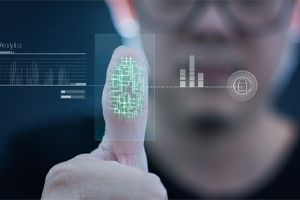Digital Forensics: Solving Legal and Regulatory Issues
Visit BSI's Experts Corner: Home for insights from BSI’s practice directors and industry experts on Environmental, Health, Safety, Security, and Sustainability.
November 17 2022 - The demand for digital forensics is on the rise, largely due to the increased number of cybercrimes targeting the vast amounts of information organizations digitally store. IT consultancy, AAG, has revealed that investment fraud is now the costliest form of cyberattack, averaging a staggering $70,811 lost per victim in 2021. It’s no wonder business leaders are deeply concerned by the prospect of falling victim to an attack.
In a world where data is the lifeblood of organizations, digital forensics can save a business from the catastrophic effects of a cyber incident. Fraud, blackmail, or other financial crimes jeopardize a victim’s valuable data, credibility, and their organization’s bottom line. If a cyberattack does occur, it needs to be immediately identified and remediated so no further damage can be done.
Digital Forensics in the Legal Sector
Digital forensics is a support service and branch of forensic science that can identify, process, and report on data. It includes the forensic analysis of desktop computers, laptops, mobile devices, email servers, cloud environments, and more.
The UK National Police Chiefs’ Council (NPCC) National Policing Digital Strategy identified that there is a digital element to 90% of modern crimes, which, with more and more data being stored digitally, isn't surprising. This has given rise to forensically sound digital investigations in legal and corporate settings.
In legal proceedings, digital forensics is used to support a criminal case by uncovering case-clinching evidence from digital devices belonging to a suspect. It can also help prove a suspect’s innocence and back an alibi, through sourcing a device in a certain location at a specific time.
Why You Need a Team of Forensic Experts
Digital forensic experts are impartial partners in the legal process. They are qualified both to ensure that data security and client confidentiality are always maintained throughout a case. Forensic teams use specialist skills, proven experience, and advanced technology to deliver forensically sound results for their clients. As a collaborative partner, they ensure the integrity of electronic evidence is preserved to use as evidence.
How Advancements in Technology Have Impacted Digital Forensics
The Fourth Industrial Revolution in manufacturing was born from the convergence of technology, including cloud computing, the Internet of Things (IoT), and big data. Digital forensics wasn’t immune from the effects of Industry 4.0 and, like most business fields, forensic teams are facing new challenges due to advances in technology, and the rising threats that come with it.
Until the late 1990s, digital forensics was coined “computer” forensics, with the world wide web and computers being the only form of evidence to investigate. Now, data is stored across multiple devices, and this has increased pressure on digital forensic teams. Adding to this pressure are soaring developments in anti-forensic techniques designed to cover the tracks of cyber criminals, including file encryption, disk wiping, and malware. Experts must keep up to speed with the latest anti-forensic techniques to ensure evidence (and their work) is not jeopardized.
Lastly, the rise in hybrid working models and businesses transitioning to the cloud mean that forensic investigations are being conducted both internally and externally, so cyber criminals have more loopholes for potential attack.
Future Challenges Law Firms Face
The number of legal proceedings requiring digital forensic services has increased exponentially, alongside advances in technology. According to Transparency Market Research, in 2016, the global digital forensics market stood at a valuation of US$2.87bn and is estimated to be worth US$6.65bn by 2025. This rise in demand is leading to a backlog for law firms and agencies globally. This will continue for years to come, with predictions of evidence analysis getting more complex as digital devices, such as mobile phones, tablets, and AI, showing no signs of slowing.
Read Conor Hogan’s Digital Forensics: Solving Legal and Regulatory Issues to discover how using the latest advances in technology ensures trust in the face of digital chaos. For more insights on other Digital Trust, Privacy, Information Security, and Environmental, Health, and Safety topics that should be at the top of your organization's list, visit BSI's Experts Corner.





